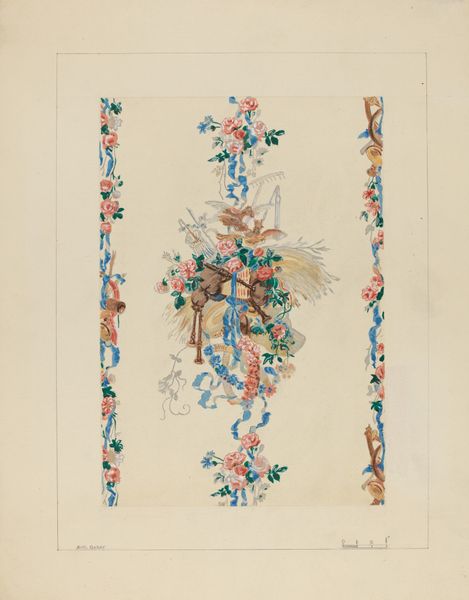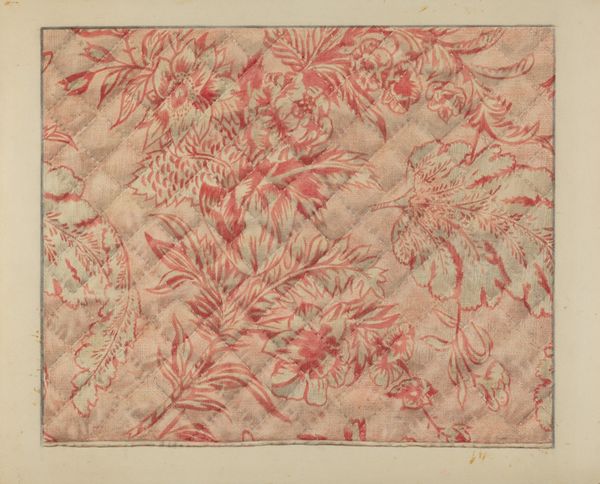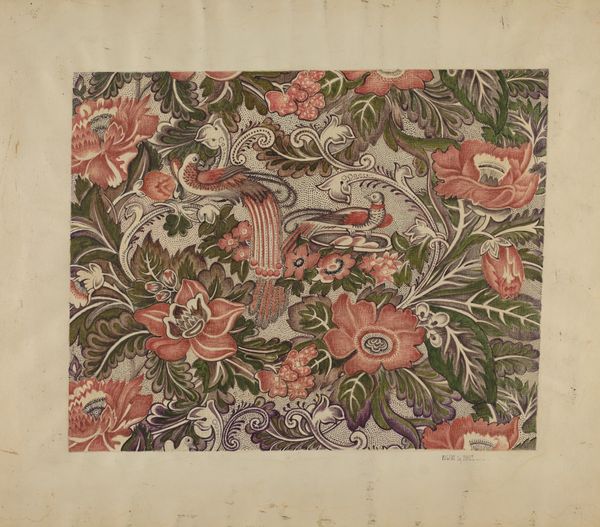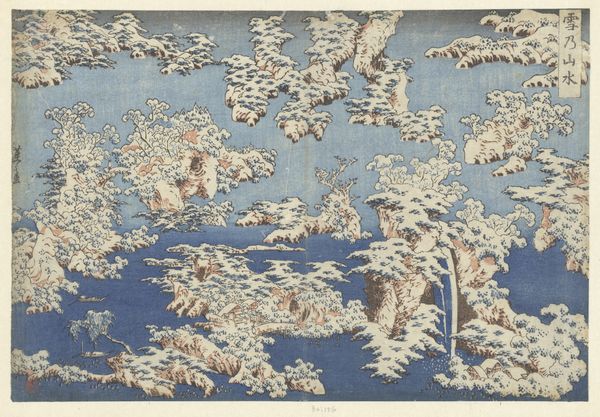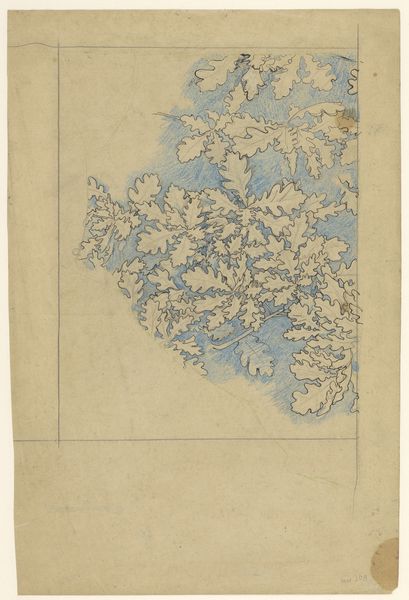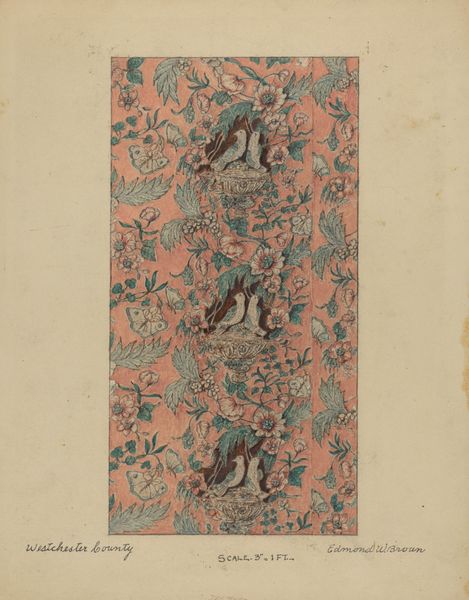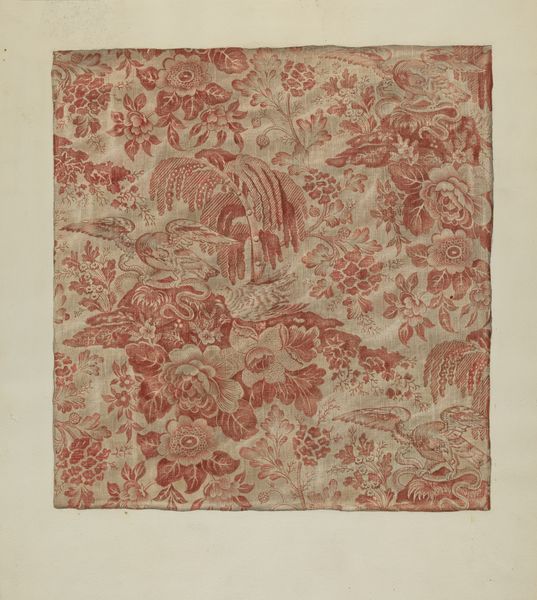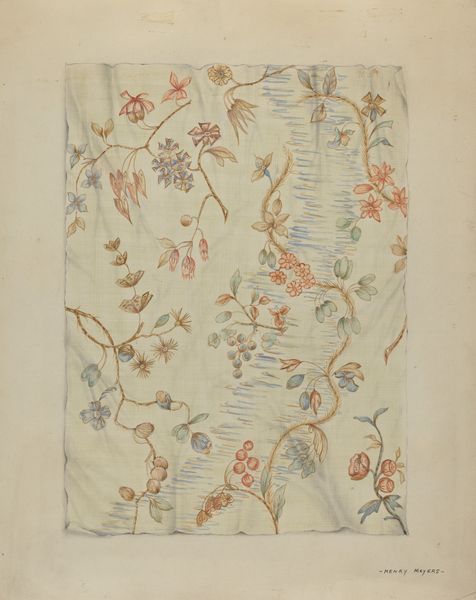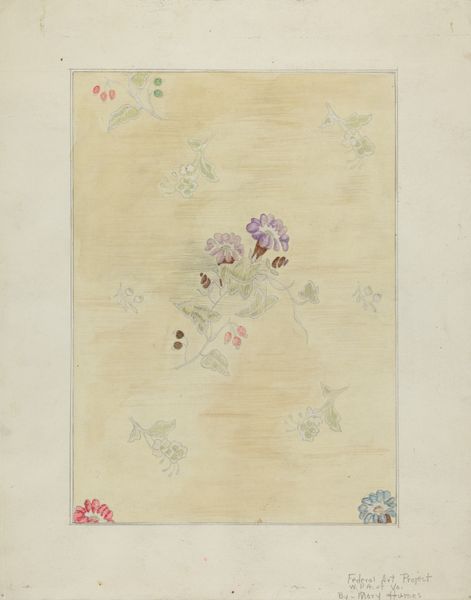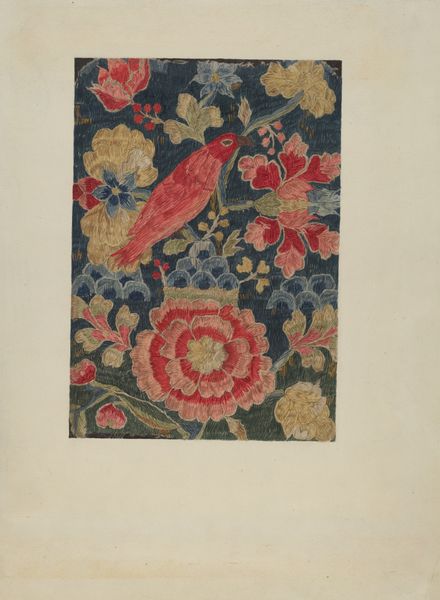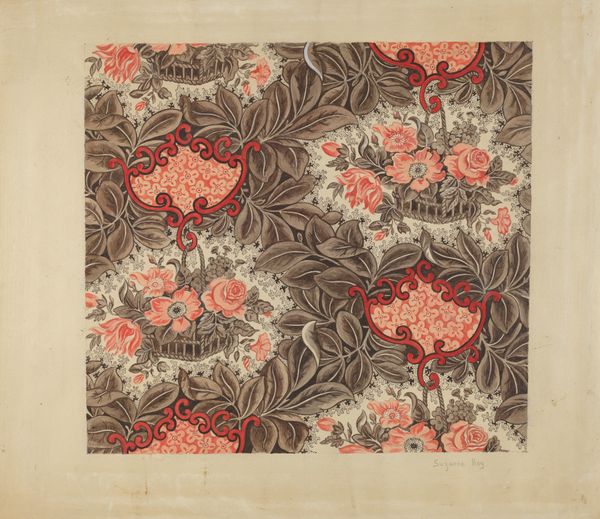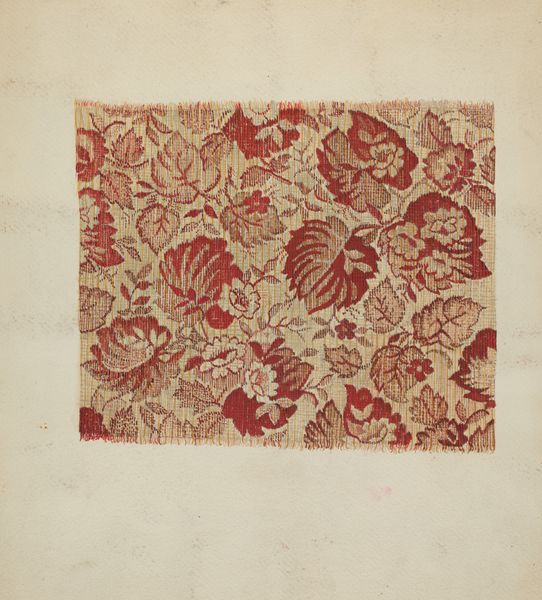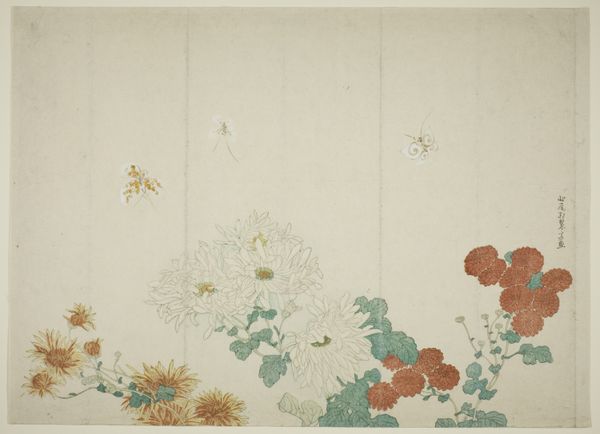
drawing, paper
#
drawing
#
water colours
#
paper
#
decorative-art
#
watercolor
Dimensions: overall: 22.6 x 28.9 cm (8 7/8 x 11 3/8 in.) Original IAD Object: 14" long
Copyright: National Gallery of Art: CC0 1.0
Editor: So, here we have Lina Manetto's "Wall Paper," created sometime between 1935 and 1942, using watercolor on paper. The overall impression I get is very delicate, almost like a vintage textile sample. All those shapes interplay, they create such intricate harmony. What strikes you when you look at this, viewed purely as visual experience? Curator: It's the systematic arrangement of forms, the careful distribution of color, and the textural variations that compel attention. Notice how the repeating floral and geometric shapes, rendered in watercolor, establish a visual rhythm, governed by underlying structure of symmetry and asymmetry. Editor: Do you mean the interplay of white, green, and those tiny spots of red? It does feel quite deliberate. Curator: Precisely. These hues aren’t simply decorative. How the eye is led through these planes. Each element, regardless of color or shape, contributes to an equilibrium within the picture plane. And notice the subtle modulations within those limited shades. Can you distinguish variations between each visual area? Editor: Now that you point it out, the variation in the ground behind the flowers creates another texture. It also looks a bit like Art Nouveau. Do you see the material choices, like watercolor, as inherently connected to the overall structure? Curator: Inseparably. Watercolor allows for delicate gradations, for fluidity, for near-transparency that strengthens the patterned effect, contributing to its specific material presence. The artist seems acutely conscious, shaping how we apprehend it in terms of its formal components, creating a self-referential aesthetic object. Editor: So by understanding the interplay between the lines, shapes and colors and the artist's deliberate application, we can truly understand the message of this design! Curator: Exactly. Close attention to form reveals its inner logic.
Comments
No comments
Be the first to comment and join the conversation on the ultimate creative platform.
